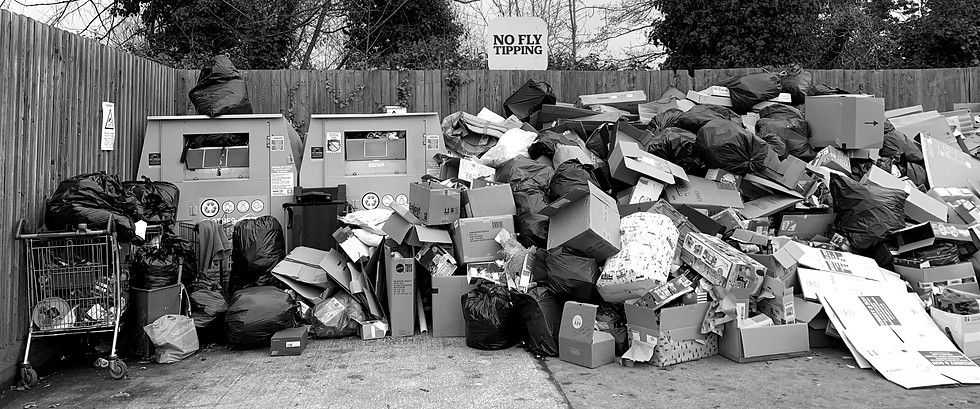SARA SKARP RESEARCH
The project
Introduction
What is put forth here about the 'Community Waste Movement' comes from a three-year PhD project, undertaken at University of East Anglia (Norwich, UK), which was co-funded by Norfolk County Council. The aim throughout the project was to understand how more sustainable waste systems and practices may be nurtured and facilitated. From early on, I was amazed by the potential and achievements I saw in what community groups do in order to not only reduce waste, but also think, act, and organise differently around consumption, stuff, material, rubbish, and last, but not least, people. This, and the quest to understand what kind of potential and possibilities these groups contain and represent, became the focus of this research project.

A survey and three case studies
The empirical work in this research project was 1) a survey aimed at Community Waste Projects in the UK, which was an exploration of the field (asking for example about organisational forms, aims, achievements, challenges and so on), and 2) three case studies with different Community Waste Projects in the UK: one reuse hub, one item-lending library, and one litter-picking group. The purpose of the case studies was to gain a deeper insight into how these groups organise around waste and/or stuff.
(A small side note here is that all participants, both individuals and groups, are anonymous in my research)
Key findings
Summarising a few key findings from a long and extensive project is challenging, but here are the most relevant for waste and/or community practitioners:
-
The Community Waste Movement is diverse, but groups here have in common that they are non-state, non-profit; relatively small in scale; have environmental as well as social objectives and/or outcomes; and that the environmental objectives revolve around material stewardship and care, and the impact of materials on the environment.
-
The Community Waste Movement both provides services and works to challenge norms around consumption, stuff, material, and waste.
-
Community Waste Projects reduce the amount of waste going to landfill, incineration and even to industrial recycling; they clean streets, neighbourhoods, towns and cities; they clean natural areas and prevent waste from further polluting these; they provide access to free or cheap material (e.g. wood, soil, paint) and stuff (e.g. clothes, furniture, kitchen items, books, tools).
-
Community Waste Projects petition/lobby their local governments; they work alongside and in partnership with local government; they inspire the local public to care for their community/their stuff/other people; they raise awareness around the impact of waste and wasting on the environment as well as on people.
-
-
The Community Waste Movement has many additional and immeasurable benefits, for example combatting loneliness, providing opportunities for disadvantaged groups, creating more relationships in communities, making friends, spreading positivity and kindness, and much more.
-
The Community Waste Movement also showcases that it is possible to work with waste and stuff in different ways, guided by objectives that are neither regulatory targets nor profit incentive, i.e. to do more than is 'needed' and do that which is not profitable.
-
The Community Waste Movement faces many challenges, as do many community-based initatives, for example:
-
Funding - there is too little funding available, funding applications are too complicated, or funders demand taxing, and sometimes impossible, objectives and outcomes. This is problematic for many reasons, but especially as these groups often provide vital environmental and social services to society, and especially in times where governments do not, or cannot, provide these.
-
Material/logistical challenges - difficulty finding and paying for suitable storage and sites for equipment, shops etc; infrastructure (both physical and digital); and the amount and/or quality of stuff/material handled are other challenges often mentioned by groups in the movement.
-
Participation - much of the work in this movement is done by volunteers, which can make it challenging to have a steady and reliable number of hands available.
-
Summary
The Community Waste Movement contains and represents much potential and possibility - the groups here work differently around waste, they reduce waste and negative impacts from waste, they provide needed services, they challenge norms and raise awareness, they infuse waste reduction with much needed positive social outcomes, and they showcase, experiment with, and can inspire to more sustainable waste systems and practices.